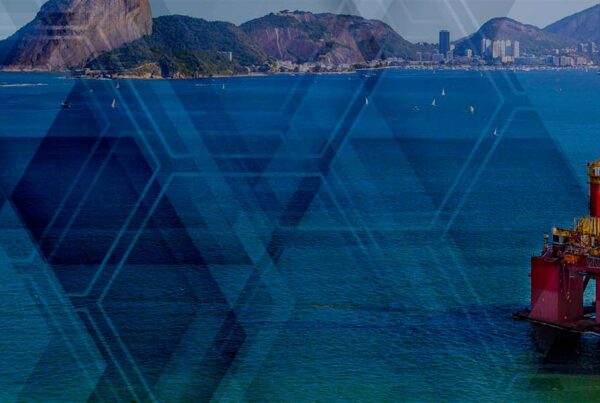In this Westwood Insight special, Westwood’s Steve Robertson speaks to Roberto Garavaglia, Senior Vice President at Leonardo to get a manufacturer’s view on the current offshore helicopter market. Roberto is responsible for Competitive Analysis & Strategy at Leonardo.
The Helicopter Market – A Manufacturer’s Perspective
There are many stakeholders in the offshore helicopters business, the owners, operators, and of course the millions of passengers that travel every year to and from offshore installations. In our latest industry insight, Westwood’s Steve Robertson speaks to Roberto Garavaglia, Senior Vice President at Leonardo to get a manufacturer’s view on the current offshore helicopter market. Roberto is responsible for Competitive Analysis & Strategy at Leonardo and is a regular and very well-known speaker at helicopter industry events worldwide.
Inevitably, most conversations about the oil industry start with the oil price… Roberto observes: “The latest crisis is now four years old and it has triggered a profound reassessment of how oil companies spend their money and how they use their assets. They are now much more efficient in how they use their assets and more restrained in how they spend their money. The oil price is now higher, we all can see it, yet we see exploration levels are far lower than what we would normally expect for these oil prices. It seems that offshore resources are being depleted far faster than they are being discovered.
“We see the same with the helicopter market. As an engineer I think in terms of systems…. Previously we had a stable system where we had a clear relationship between oil prices and helicopter acquisition, and now the pendulum has moved and we are out of equilibrium. Yet I don’t see that the fundamentals of long-range operations have changed.”
So what has changed in the short-term? Roberto observes that “in some limited cases we have seen replacement of helicopters with boats, Angola is one of them. I don’t see this as being a long term trend for long range operations. The IOCs have not changed their approach on safety… it’s possible this isn’t the same for all E&P companies including the less prominent ones but we see the majors adhering to high safety standards.”
Looking to the supply side of the industry, we highlight the supply side problem in the industry and point to Westwood’s latest Helicopter report and the low levels of utilisation for the current fleet. The last build cycle in the helicopter market has been a strong one and has changed the fleet mix significantly. Roberto notes that “the super-medium class has come into the market at the start of the crisis…a lot of the market that was previously taken by the large helicopters (e.g. S-92s and H225s) is now going to super-medium. These helicopters can do 90% of what the large 19 seaters can do. Our 189 model is doing well and in the intermediate medium size the 139 has become a strong favourite.”
We ask Roberto what is going to happen to the fleet – how will the supply/demand imbalance be solved? “For now: we can observe that there are lot of S92s around, and many of them are not flying. Lessors own a lot of them and rather than have them on the ground they will lease units at low rates to keep them flying. This is undoubtedly affecting the behaviour of the market. We are taking a conservative view on the supply side for the rest of the decade.”
We start to explore how the supply/demand picture could fundamentally change and restore balance in the industry. In the many of the offshore markets, units (rigs, vessels) decay quickly when not-used and often end up scrapped during downturns if the prospect of future utilisation seems remote. In other aviation or transport markets, movement in regulation has taken supply out of the market, such as Stage 3 noise regulations in fixed wing aircraft or euro emissions standards for vehicles. Roberto comments “apart from self regulation there is no reason a 40 year-old helicopter can’t operate and compete with a modern unit. The old unit won’t have the same comfort for the passengers or modern safety features but these units are still active in the market. The focus on aviation regulation quite naturally tends to be towards the 3.5 billion passengers flying in fixed-wing aircraft rather than the several million that fly offshore on helicopters.”
So, what is there in the offshore market that gets Roberto excited for the future? He says that they see “interest in the tiltrotor technology for long-range operations and avoiding weather. We’re not saying that we expect the AW609 (Leonardo’s hybrid VTOL aircraft that can land and take-off like a helicopter but is pressurised and can fly above weather at much higher speed than conventional rotorcraft) to be a huge change for day-to-day crew transfer. However, we do think that there will be applications where the shorter time, longer range and ability to avoid weather will be critical and this will include medical evac, and other ad hoc missions for long distance. We welcome the industry to test the concept.”
We note that the Westwood data points to a number of developments outside traditional oil and gas hotspots such as the North Sea, Gulf of Mexico, Gulf of Guinea, etc. Our latest analysis highlights the development of resources in previously undeveloped areas such as Guyana and East Africa. Roberto thinks a key driver for helicopter demand in these regions will be Search and Rescue (SAR) capability: “You cannot start up offshore operations without SAR… if you have people at sea you need to be able to rescue them. This is clearly obvious for the newer regions that have no coverage but even in established regions such as the Gulf of Mexico, Australia, etc, the local coast guard can only deploy a certain level of capability and often do not have the resources to cover offshore oil and gas operations. SAR is then done privately.”
A final area of note is what Roberto observes as the “increasing relevance of windfarms. It’s a different way of working offshore… you essentially are operating a flying crane and this brings with it a whole number of different considerations such as winch performance, single engine performance and of course with wind turbines the ability of the helicopter to get close to the turbine to drop people and equipment onto the ‘basket’ on the rear of the nacelle. Our AW169 is favoured in this application. It’s different but it is still energy-related and growing fast. Until recently it has been limited to the lower North Sea i.e. Denmark and Germany but now we see applications in Asia, USA… it is a global opportunity.”
— ENDS
For more information on our Offshore Helicopters analysis, including the most recent outlooks, please contact [email protected]




